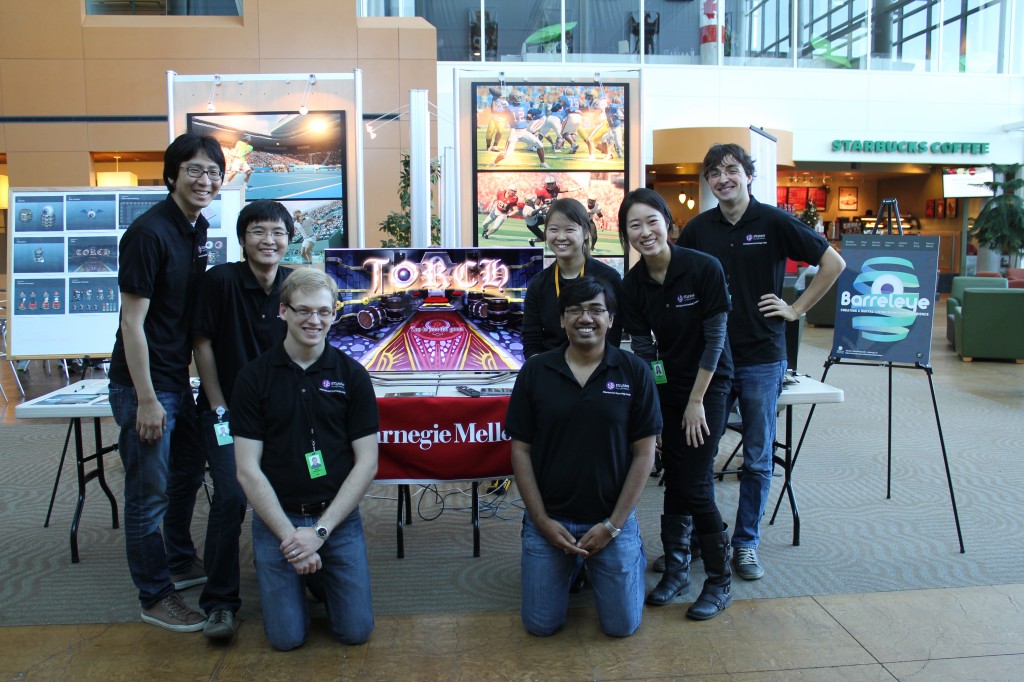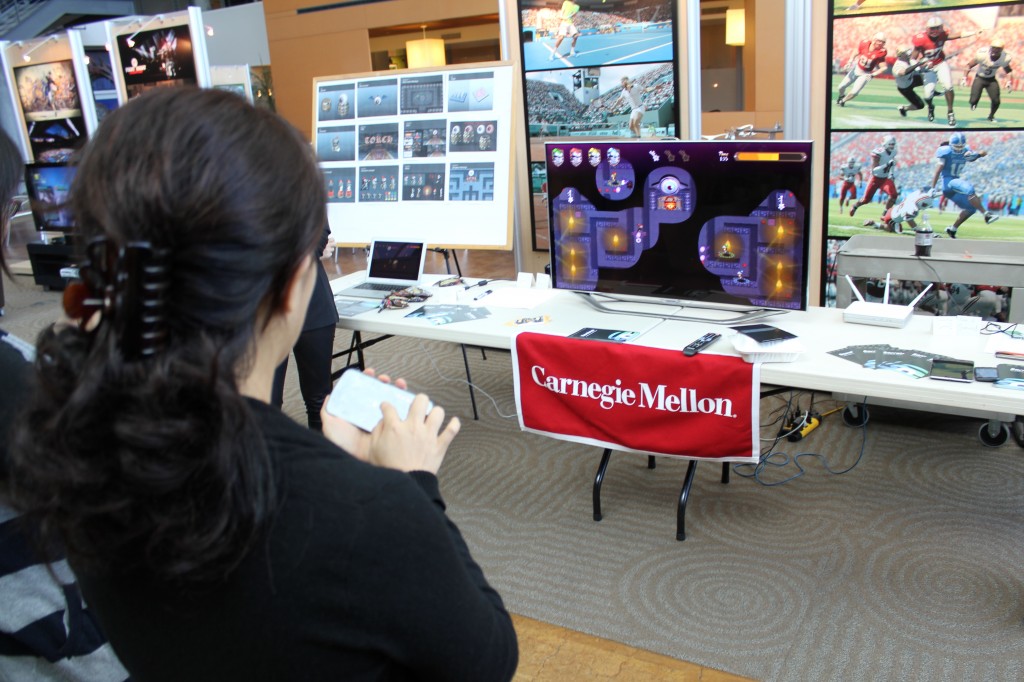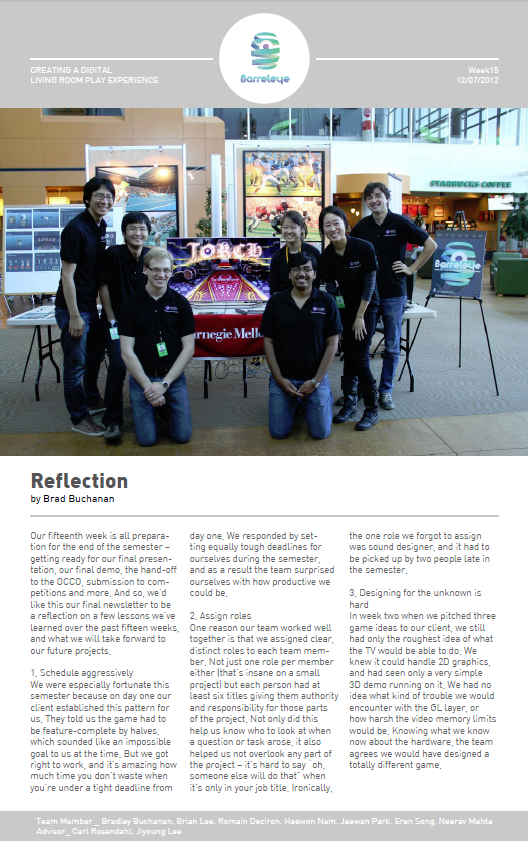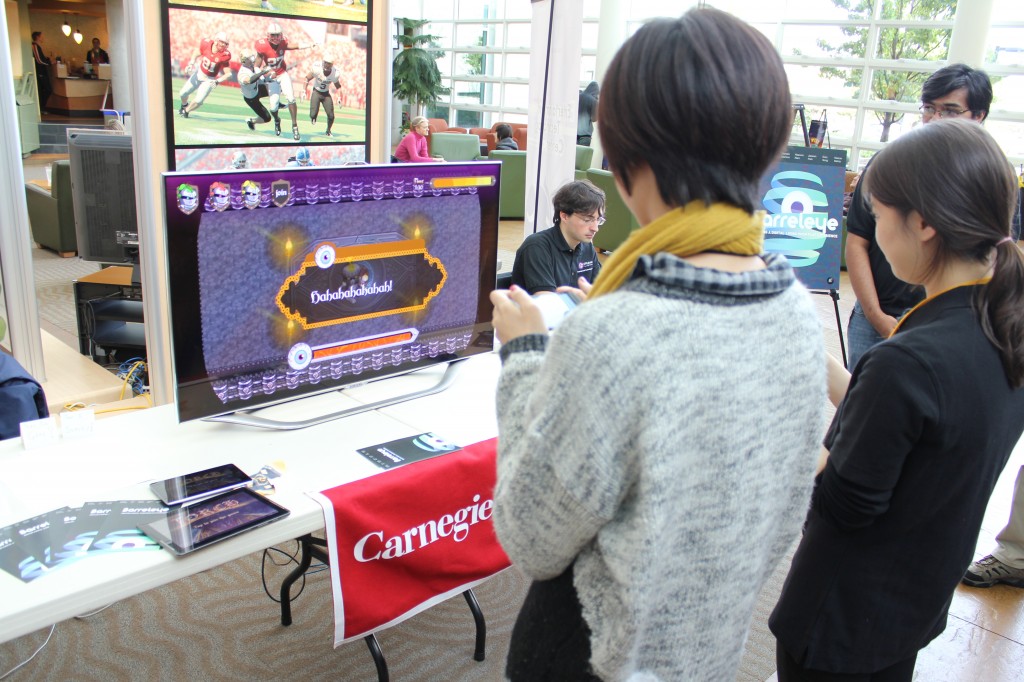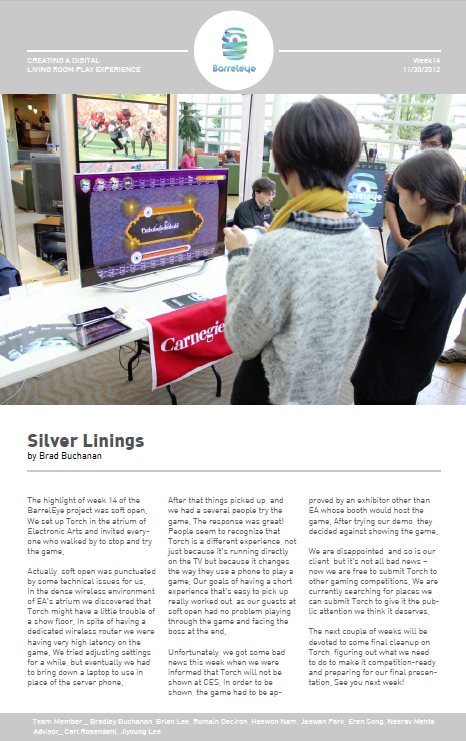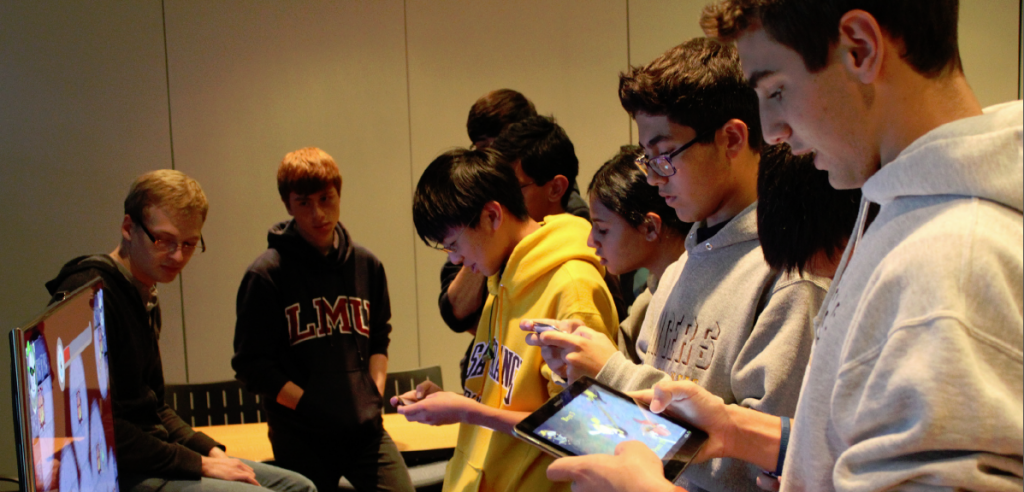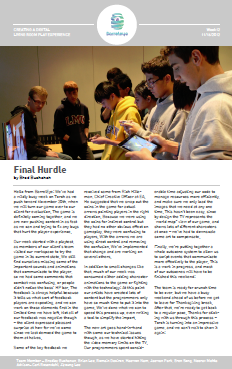In the theme park industry, soft opening is generally to detect technical issues that might cause problems from having a large volume of guests when they ride the attractions. Therefore soft opening prevent attractions from operating inefficiently in grand opening.
However, In CMU-ETC, soft opening is the time to show off our final works to people at EA. It usually happens two weeks before final presentation. On Nov 28th, we set up our work in an open space to demonstrate our projects. We shared ideas, got some feedback from the audience and mingled with them casually for three hours.
Bejorn, the producer of Xenon team, explained their project in front of people. The project was about exploring the possibilities technology will provide us in 10 to 20 years and made a short film.
Barreleye team had some technical issues in the beginning. There were a lot of latency because there were noise in the wireless network between the TV and mobile phones. While they were fixing the problem, the team played the game trailer on TV. After about one hour, the awesome programmers finally fixed the problem, and it worked!
West Turn presented a brilliant game to the audience. “Shake” the ipod to win the game!!
This fall semester, the soft opening was a little more quiet than previous years, but we learned how to setup countermeasure and demonstrate our work. In addition, sharing our work and having fun with people is always great!
And.. Team Photo 

